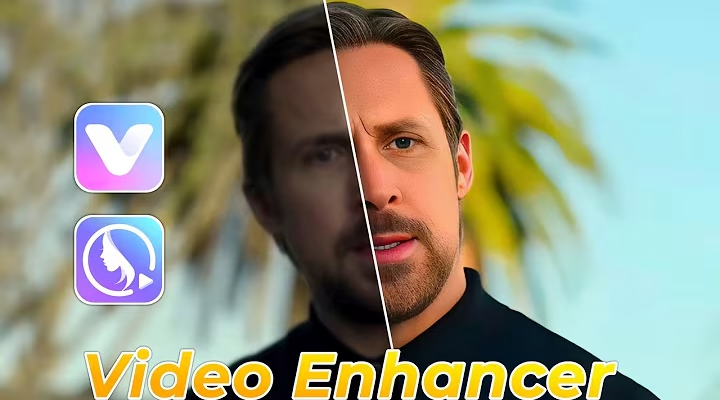In a swiftly evolving technological landscape, video quality has escalated to new heights, culminating in the jaw-dropping 8K resolution. Remember when 1080p was the ultimate benchmark? Fast forward to the present, and 8K now reigns supreme as the pinnacle of visual clarity. But how does one elevate their video content to this stunning, crystal-clear dimension? While it may seem like an esoteric pursuit, anyone can achieve this level of video fidelity with the appropriate tools and methodology. Let’s dissect the process.
Decoding 8K: What’s the Big Deal?
Before delving into the how-to, it’s pivotal to grasp the significance of 8K. Think of 1080p, commonly known as Full HD. Now, imagine Full HD amplified fourfold—that’s 8K in a nutshell. Featuring an astounding 7680 x 4320 pixels, 8K boasts quadruple the clarity of 4K and a staggering sixteenfold of 1080p, equating to over 33 million pixels competing for your attention.
The outcome? A visual experience so razor-sharp that it feels as though you could practically reach through the screen. You’ll discover nuances previously unnoticed, with colors that burst forth vibrantly, offering an almost tactile viewing experience. However, achieving this level requires more than just a high-end display. To attain such a resolution, you need premium source material, specialized software, and precise techniques to enhance your existing videos to 8K. Let’s unpack how to make that happen.
Foundation is Key: Starting with High-Quality Footage
Imagine attempting to recreate a masterpiece on a scrap of paper using a dull crayon—that’s what it’s like trying to upscale a low-resolution video to 8K. Starting with high-quality footage is indispensable. If your original content is in 480p or even 720p, elevating it to 8K will result in severe degradation. Ideally, you should work with 4K footage or, at the very least, 1080p to ensure the best possible final outcome.
Picking the Right Format
The format of your source material can dramatically influence the upscaling process. RAW footage or high-bitrate formats like ProRes or DNxHD retain more intricate data, providing a richer tapestry to enhance. On the other hand, compressed formats like MP4 or AVI, though space-efficient, often sacrifice vital quality details, which may impede efforts to upscale effectively to 8K.
The Arsenal: Software Tools for 8K Upscaling
Now, let’s touch upon the “magic wands” of video enhancement—the software solutions. Elevating video quality to 8K demands more than a mere filter. You need robust software that can manage the monumental processing power required to upscale without pixelating your footage into an unrecognizable mess.
- Topaz Video Enhance AI A frontrunner in video upscaling, Topaz Video Enhance AI employs artificial intelligence to refine video quality, filling in the gaps that traditional upscaling algorithms often miss. It scrutinizes every frame of your video, predicting what higher-resolution imagery should embody and fabricating it, pixel by pixel.Trained on a massive dataset of high-quality content, Topaz’s AI achieves superior sharpness and clarity even when upscaled to 8K. Although time-consuming, particularly for longer videos, the results are frequently worth the wait.
- Adobe Premiere Pro & After Effects For those who prefer a more hands-on approach, Adobe’s Premiere Pro and After Effects provide potent tools for video enhancement. Although lacking AI-driven upscaling, these platforms offer a variety of effects and filters capable of significantly boosting video quality.Premiere Pro’s Lumetri Color panel, for instance, allows you to enhance colors and contrast, making your footage appear sharper and more vibrant. Meanwhile, After Effects delivers fine-grained control, with tools for frame interpolation and noise reduction, essential for upscale efforts.
- DaVinci Resolve DaVinci Resolve, renowned for its sophisticated color grading capabilities, is another heavyweight contender for video enhancement. With higher resolutions, color discrepancies become glaringly apparent. Resolve’s color correction tools ensure that every pixel radiates vibrancy and precision.Additionally, its advanced upscaling algorithms make DaVinci a robust option for 8K enhancement, providing tools such as noise reduction and detail restoration to elevate video quality.
- Final Cut Pro X For Mac aficionados, Final Cut Pro X offers an excellent suite of upscaling tools. Coupled with its advanced rendering engine, Final Cut makes working with large 8K files a smoother experience. Its integration with Apple’s ecosystem ensures seamless transitions, especially for those looking to create 8K video masterpieces.
A Step-by-Step Guide to 8K Video Enhancement
Now that we’ve covered the arsenal of tools, let’s outline the process of enhancing video quality to 8K. For this guide, we’ll focus on using Topaz Video Enhance AI, though these principles can be adapted to other software.
Step 1: Preparing Your Footage Organize your original footage, ensuring it’s in the highest quality format possible. If your content spans different formats or resolutions, it may be beneficial to convert them into a uniform format for a smoother process.
Step 2: Loading Footage into Topaz Open Topaz Video Enhance AI and import your footage. The software will analyze the content, presenting various enhancement models suited to different scenarios. Choose the most appropriate model based on your video’s resolution and quality.
Step 3: Selecting the Best Model and Settings Picking the right enhancement model is crucial. For 4K footage, models like Artemis HQ or Proteus work optimally for high-quality upscaling with minimal distortion. Set the output resolution to 7680 x 4320, the standard for 8K. Adjust the settings such as noise reduction or sharpness sparingly to avoid unnatural results.
Step 4: Initiate the Upscaling Process Once the settings are locked in, initiate the upscaling. Be patient, as 8K enhancement is a resource-heavy task and can take several hours or even days, depending on the length of your footage.
Step 5: Reviewing and Refining Post-upscale, meticulously review the results. Look for any anomalies, color mismatches, or artifacts. If needed, refine the footage using software like Premiere Pro or DaVinci to iron out imperfections.
Step 6: Export and Enjoy Finally, export your enhanced video in a high-quality format. Ensure you preserve the 8K resolution by selecting an appropriate output format and bitrate, especially if the video is destined for streaming platforms like YouTube.
The Power Beneath: Hardware Considerations
Achieving 8K video isn’t just a software endeavor—it’s also about having the right hardware. The immense processing demands of 8K content require a system equipped to handle the load.
CPU and GPU: A robust multi-core CPU is essential for rendering 8K footage swiftly, while a high-end GPU with AI capabilities is vital for expediting the upscaling process. NVIDIA’s RTX series is particularly well-suited for such tasks.
RAM: 8K content demands vast amounts of memory. A minimum of 32GB RAM is recommended, though 64GB or more would further enhance performance.
Storage: The sheer size of 8K video files necessitates ample storage. Opt for SSDs over traditional HDDs, with NVMe SSDs providing optimal speed for read and write operations.
Cooling: Intense processing generates heat, so ensure your system has adequate cooling mechanisms to maintain performance under stress.
Future-Proofing Your Content
Is investing all this effort in 8K worth it? Absolutely. Though 8K content is currently rare, it represents the future of video technology. Future-proofing your videos ensures that when 8K becomes the standard, your content is already positioned to shine.
Conclusion: The Journey to Unmatched Clarity
Enhancing video to 8K is both a technical challenge and a creative endeavor. The rewards—a stunningly detailed, future-ready visual experience—are well worth the effort. Whether you’re a seasoned professional or an enthusiastic hobbyist, the tools and techniques outlined here will help you navigate this exciting frontier of video technology.



